A Closer Look at the (Other) Games of Richard Garfield
Richard Garfield is a poor candidate for the white knighting of this nearly unknown blogger. His most revered creation, Magic: The Gathering, has made him both rich and famous (with the pasty-skinned, unwashed basement-dwellers, at least*). However, despite having designed what is arguably the most successful hobby game of all time, Garfield gets very little love from hobby board game and card game enthusiasts—I'm looking at you BGG users. Ask them who the best game designers of all time are, and you will get varied answers, and many of them, before anyone gets around to mentioning Garfield. Part of that is the reactionary hatred to M:TG among board game hobbyists. The marketing strategy of collectable card games, a genre that Garfield pretty much pulled fully-formed from his own skull, rubs many gamers the wrong way. I read lots of “Magic is simply a he-who-spends-the-most-wins game” type of comments on board game sites. I'm not here to defend Magic, though I may write my guide to playing M:TG on the cheap at some point. What I'd like to do is make the case that, even if we remove M:TG from Garfield's oeuvre, the remainder of his designs places him among the greats in this relatively new field—the hobby-game designer. Here is a look at Garfield's best creations, minus that great big elephant trying to hide behind the bookshelf (also minus the Battletech card game because I know nothing about it).
*JK; Chill
RoboRally
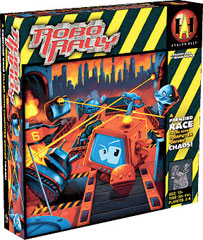 When Garfield first came to Wizard's of the Coast to show off prototypes, Roborally was the game he had highest hopes for. Many years later, he was still telling interviewers that it was his best design. In the game, players control robots racing to navigate a factory floor complete with conveyer belts, pits, and other obstacles. Using programmed movement (they place movement cards that will be executed in order from left to right), the players attempt to get their robot to be the first to navigate to a pre-determined number of checkpoints. The game is chaotic as each player's best-laid plans can easily be foiled by just one play mistake or by another player intentionally getting in the way. For me, the game exhibits the best combination of strategy and luck that I have seen in a game. The randomness, provided by the drawing of program cards and the unpredictability of human opponents, is never so much that I don't feel that I either won or lost because of the quality of my play. The most common complaint about the game is that it plays a bit longer than it should. We always play on just two floor tiles, resulting in a game that runs between an sixty and ninety minutes: just right for a light strategy game with more interesting choices than most games of that play length.
When Garfield first came to Wizard's of the Coast to show off prototypes, Roborally was the game he had highest hopes for. Many years later, he was still telling interviewers that it was his best design. In the game, players control robots racing to navigate a factory floor complete with conveyer belts, pits, and other obstacles. Using programmed movement (they place movement cards that will be executed in order from left to right), the players attempt to get their robot to be the first to navigate to a pre-determined number of checkpoints. The game is chaotic as each player's best-laid plans can easily be foiled by just one play mistake or by another player intentionally getting in the way. For me, the game exhibits the best combination of strategy and luck that I have seen in a game. The randomness, provided by the drawing of program cards and the unpredictability of human opponents, is never so much that I don't feel that I either won or lost because of the quality of my play. The most common complaint about the game is that it plays a bit longer than it should. We always play on just two floor tiles, resulting in a game that runs between an sixty and ninety minutes: just right for a light strategy game with more interesting choices than most games of that play length.
Netrunner
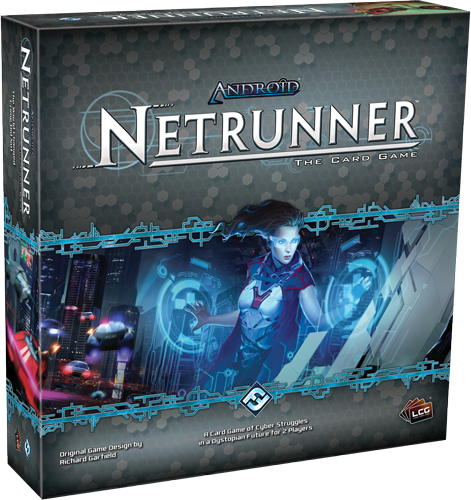
Netrunner was Garfield's third go at a collectable card game and it is about as perfect as the genre can be. It differs from Magic in numerous ways, but most importantly in the fact that the game is asymmetric. One player plays a hacker, the other corporate security. As the hacker attempts to steal data, the corporation attempts to fry the hacker's brain using a variety of security measures. The game was a failure as a product but critically acclaimed. Over the years since its release, Netrunner, rather than fading into obscurity like most failed games, has instead gained in stature. Fantasy Flight Games, happily, saw how popular the dead CCG remained and decided to revive it (without Garfield's input) as one of their patented Living Card Games—a non-collectable, but still expandable, offshoot of the CCG genre). Not long before I began writing this article, Netrunner was the undisputed hit of Gen Con 2012, selling out despite what FFG called a much-larger-than-average number of copies on hand. The new production is great and it's popularity suggests just how far ahead of its time Netrunner was. I can't think of many other TCGs from the post-Magic explosion that could be brought back now without feeling dated (anybody silently thinking Wyvern needs to go wash their brain off with soap).
Filthy Rich
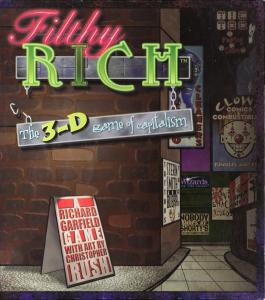
This advertising-themed game is among the most innovative “board” games ever created. “Board” gets its qualifying quotation marks here because Filthy Rich is actually played inside a three-ring binder. Players buy businesses and place cards representing them in card-protector pages within the binder. The clear pages mean you can see all the layers at once with cards on the early pages blocking cards on the later pages. The game is meant to simulate standing at the end of a street and looking along its length at the signage, with businesses closer to you blocking the signs of those that are farther away. Players roll dice to flip the pages and determine which business gets a visit from customers each round. It is simply a stunning design that is great fun to play. Just writing this synopsis has reminded me that I've got to get this to the table for my new game group as soon as possible.
King of Tokyo
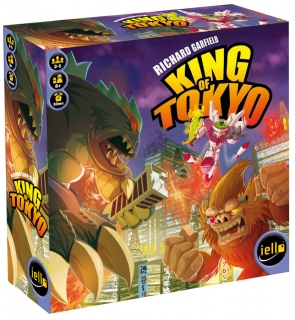
King of Tokyo is Garfield's take on the Yahtzee concept of re-rolling dice in an effort to get a particular combination. The big draw is the theme as the players each take the role of giant monsters battling in the streets of Tokyo. Players gain powers through buying cards (or mutating if the expansion is being played) and try to either control Tokyo, or otherwise gain victory points, or to simply knock out all of the other players. I started writing this article last year, but I didn't own this, Garfield's most successful new design in years, so I held up until I had a chance to get it and play it over the holidays. I'm glad I did. Since the beginning of the year, KoT is our most-played game. The first expansion gives each of the creatures more of an individual identity, which really improves the theme and adds even more variety to the game. Expansion or not, King of Tokyo has been a hit with everyone I've played it with. Bring on more expansions.
The Great Dalmuti
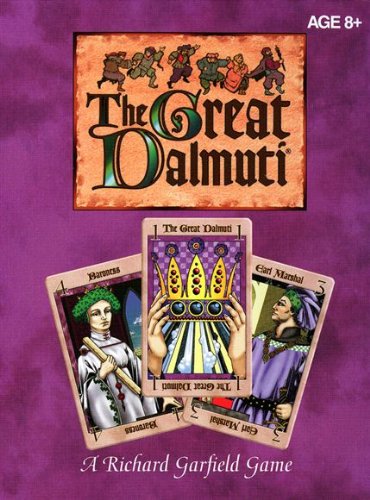
“Wait a minute,” you might be thinking, “Isn't the Great Dalmuti just a trademarked version of the traditional game President (Asshole, Scum, Secretary...)?” Well, yes, it is. However, it is also a great example of how a minor tweak of a game can have enormously beneficial results. Garfield, who, by the way, gives credit to the traditional-deck games that are the backbone of the design, had the simple idea of creating a new deck where the number of cards in the deck matched the numbers on the cards (Geez, that's confusing. All I mean is that there are two 2-cards in the deck...three 3's...four 4's...etc.) and adding to wild cards (jesters). This custom deck gives the Peon (low-man) a much better chance to survive the taxation round (where the players in low position give their best cards to those in the best position) since taxation usually ends with the Peon holding a larger number of cards of a high suit than any of the higher-ranked players could match. If a Peon gets into the lead, he often is going to win the round. The “Revolution” rule (which allows for an immediate flipping of the players' standings) is great fun when it happens also, especially after a string of rounds where the Greater Peon is taking a real beating from the royal players. All that really matters (for me) is that after playing and enjoying hundreds of games of President in high school and college, I now wouldn't consider playing the traditional game if Dalmuti were an option.
Pecking Order
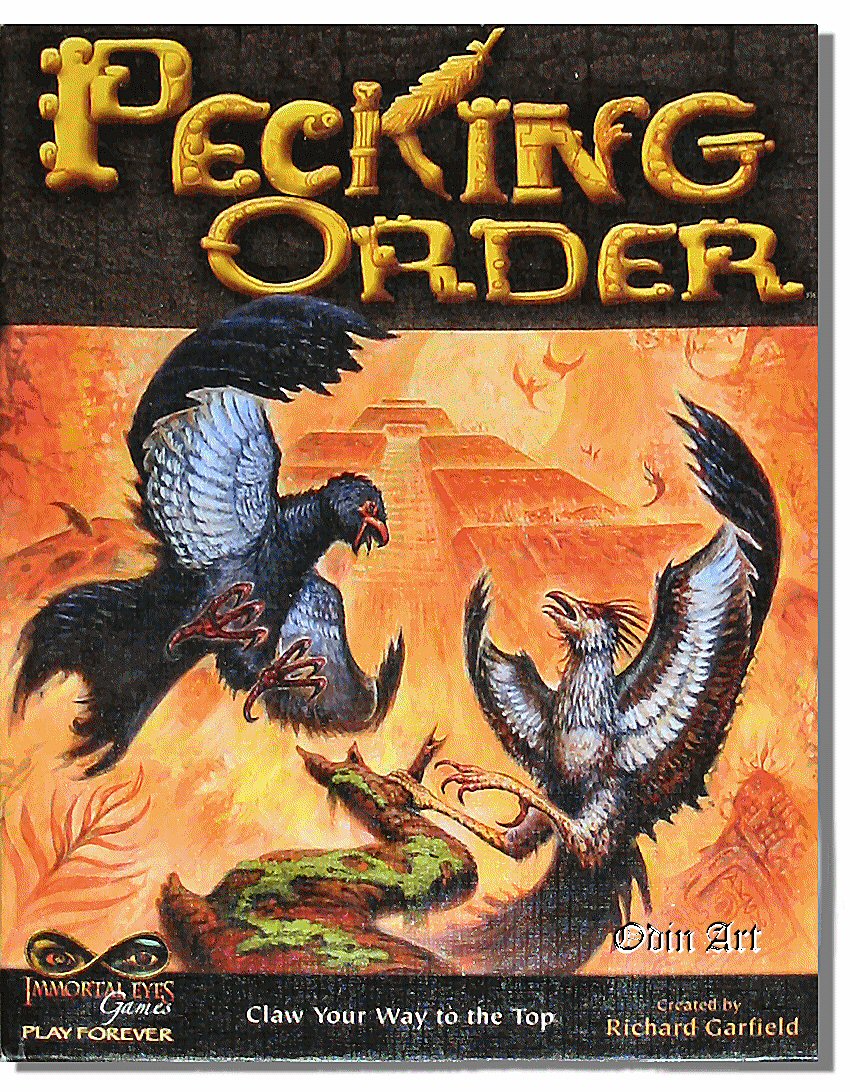
I can't possibly know if this is true or not, but Pecking Order feels like an attempt by Garfield to create a game for the legendary Kosmos Two-player game line. Though it was published by Winning Moves, it certainly would have been right at home next to Lost Cites, Balloon Cup, and Hera and Zeus. In the game, two players compete to control perches by playing numbered cards on their side of the board (think Schotten-Totten with more spaces and no Poker hands). For my money, Pecking Order is an underrated filler that would have been received more favorably if it wasn't coming from a major designer with high expectations.
Vampire: The Eternal Struggle (Jyhad)
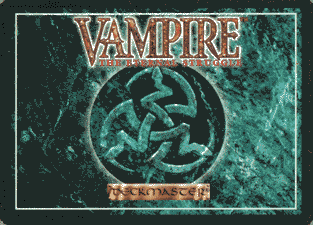 Jyhad, the second collectable card game created by Garfield for Wizards of the Coast was based on the White Wolf RPG Vampire: the Masquerade. Unfortunately, I haven't played enough of the game to have anything to say about it. I do know that the game has seen a revival or two over the years (the first of which saw the drop of the controversial Jyhad branding) and maintains a loyal following. After being dropped by Wizards, the game was picked up by White Wolf and is still going strong.
Jyhad, the second collectable card game created by Garfield for Wizards of the Coast was based on the White Wolf RPG Vampire: the Masquerade. Unfortunately, I haven't played enough of the game to have anything to say about it. I do know that the game has seen a revival or two over the years (the first of which saw the drop of the controversial Jyhad branding) and maintains a loyal following. After being dropped by Wizards, the game was picked up by White Wolf and is still going strong.
What Were You Thinking?
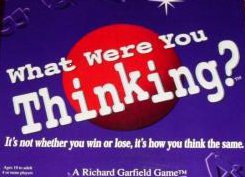 WWYT? is the only other Garfield design (along with V:TES) that I haven't played, though it hasn't been for lack of trying. A no-longer-in-print, simple party game, WWYT? continues to fetch huge prices on the reseller market (one copy on Amazon.com right now; the price—$107, though I see that the Ebay prices have fallen to a much more affordable amount). In the game, players draw category cards and then list five things that fit in the category. Points are scored for matching answers on other player's lists. Seems like an easy game to “re-create” with just pen and paper, but I still feel the need to add it to my collection. If any reader feels the need to part with a copy, let me know.
WWYT? is the only other Garfield design (along with V:TES) that I haven't played, though it hasn't been for lack of trying. A no-longer-in-print, simple party game, WWYT? continues to fetch huge prices on the reseller market (one copy on Amazon.com right now; the price—$107, though I see that the Ebay prices have fallen to a much more affordable amount). In the game, players draw category cards and then list five things that fit in the category. Points are scored for matching answers on other player's lists. Seems like an easy game to “re-create” with just pen and paper, but I still feel the need to add it to my collection. If any reader feels the need to part with a copy, let me know.